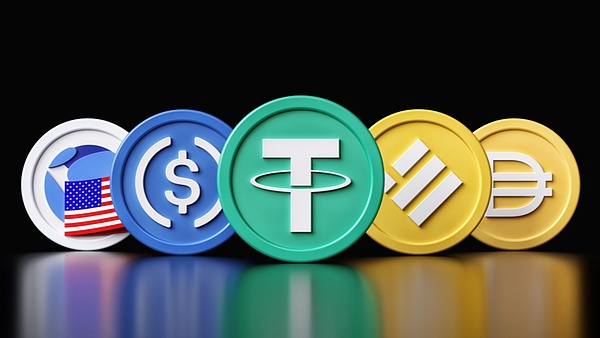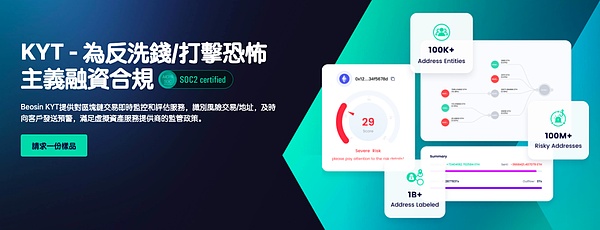With the increasing popularity of blockchain technology and digital assets, stablecoins, as an important financial tool, are gaining more and more attention and application worldwide due to their relatively stable price characteristics. However, with the popularity of stablecoins, their security and compliance, especially anti-money laundering (AML) issues, have become the core issues of industry development.
I. Basic concepts and types of stablecoins
1. What is a stablecoin?
A stablecoin is a cryptocurrency or digital asset designed to maintain a relatively stable value, usually linked to the value of a stable asset or a basket of assets, such as fiat currency (such as the US dollar, euro), gold or other cryptocurrencies. The main purpose of a stablecoin is to provide price stability in the cryptocurrency market so that it can be used more effectively as a medium of exchange, a stored value tool or a unit account, while reducing the risks brought by market volatility.
2. Main types of stablecoins
Fiat-backed stablecoins: These stablecoins are usually backed by fiat currencies as reserve assets, such as Tether (USDT) and USD Coin (USDC). The value of these stablecoins is directly linked to their reserve assets and is usually exchanged for fiat currencies at a 1:1 ratio.
Crypto-backed stablecoins: These stablecoins are backed by other cryptocurrencies, and this model usually involves over-collateralization to cope with price fluctuations of the collateral assets.
Algorithmic stablecoins: These stablecoins do not rely on any collateral assets, but use algorithms to adjust market supply and demand to maintain their price stability.

2. Current status of the stablecoin market
1. Application and development of stablecoins
Stablecoins are not only used for transactions and payments, but also widely used in cross-border transfers and capital management.
●Transactions and payments: Stablecoins play an important role in cryptocurrency exchanges, providing a convenient way to hedge against market fluctuations and for quick conversion between different trading pairs.
● Cross-border transfers: Due to the global liquidity and low transfer fees of stablecoins, they are widely used in cross-border payments, especially when fast funds transfer is required.
● Capital management: Many financial institutions and investors in Hong Kong are beginning to use stablecoins as a liquidity management tool to optimize asset allocation and manage risks.
2. Progress in stablecoin regulation in Hong Kong
The Hong Kong Monetary Authority (HKMA) and the Securities and Futures Commission (SFC) have maintained a positive attitude in the regulation of stablecoins and cryptocurrencies. In order to ensure the healthy development of the stablecoin market, Hong Kong's regulators have taken a series of measures to manage and supervise the issuance and use of stablecoins.
● Licensing system: Hong Kong has implemented a strict licensing management system for companies engaged in virtual asset transactions, which also applies to the issuance and trading platforms of stablecoins. Stablecoin issuers in Hong Kong must hold a license issued by the HKMA, and only stablecoins issued by stablecoin issuers licensed by the HKMA can be sold to retail investors.
● Anti-money laundering and counter-terrorist financing: Hong Kong's regulatory framework requires all financial institutions and service providers involved in stablecoins to comply with strict anti-money laundering and counter-terrorist financing regulations. However, the Hong Kong government plans to introduce new legislation, not simply amending the current "Payments Ordinance", "Anti-Money Laundering Ordinance" and other existing legislation to regulate stablecoins.
III. Security of Stablecoins and Anti-Money Laundering Challenges
1. Security Issues of Stablecoins
Although stablecoins provide a relatively stable value storage and transaction medium for the cryptocurrency market, they still face a variety of security challenges:
(1) Smart Contract Security Issues
● Contract design defects: Some stablecoins may rely on smart contracts to maintain their value stability. If the contract has an imperfect design, it may result in the asset being unable to fulfill the value promise of the stablecoin.
● Vulnerability attack risk: Smart contracts themselves may become the target of hacker attacks. If the attacker successfully exploits the vulnerability, it may result in large-scale financial losses.
(2) Centralization risk issues
● Deposit and collateral issues: For stablecoins backed by fiat currencies, their security is highly dependent on the security and management of the collateral assets. If the bank or custodian that deposits the collateral assets faces problems, it may affect the stability and convertibility of the stablecoin.
● Management and operational risks: The centralized management model exposes the operator of the stablecoin to management risks, such as improper fund management and internal operational risks.
(3) Regulatory risks
● Regulatory compliance: The operation and issuance of stablecoins may be regulated by regulators in various countries. If they fail to comply with relevant laws and regulations, they may face legal risks and closure risks.
(4) Market liquidity risk
● Insufficient market liquidity: Stablecoins need to have sufficient market liquidity so that users can easily exchange and trade them. If market liquidity is insufficient, it may lead to price fluctuations or inability to quickly exchange for other assets.
(5) Challenges of algorithmic stablecoins
● Risk of algorithm failure: Some algorithmic or market-driven stablecoins may rely on complex economic models and market mechanisms to maintain value stability. These models and mechanisms may fail under extreme market conditions, causing the value of stablecoins to fluctuate significantly or collapse. Currently, algorithmic stablecoins are temporarily unable to obtain licenses in Hong Kong.
2. Anti-money laundering challenges of stablecoins
Due to their global liquidity and relative anonymity, stablecoins also face unique challenges in anti-money laundering:
● Anonymity and traceability: Although most stablecoin transactions are public on the blockchain, anonymity and the use of mixers may make it difficult to track illegal activities.
● Cross-border regulatory challenges: Since stablecoins can be easily traded across borders, coordination and cooperation among countries in anti-money laundering supervision is essential.
● High-risk activities: Stablecoins are sometimes used to evade capital controls and participate in high-risk activities such as dark web transactions, which poses additional challenges to anti-money laundering work.
IV. Application of Beosin KYT in Stablecoin Security and Anti-Money Laundering
1. Core functions of Beosin KYT
Beosin KYT (Know Your Transaction) is a platform designed specifically to address anti-money laundering and compliance needs for virtual assets. It uses blockchain big data and advanced AI technology to provide comprehensive transaction monitoring and risk analysis. The main functions of the platform include:
Malicious address query:Quickly identify and mark suspicious addresses through a huge blacklist address library.
Address transaction risk scoring:Risk scoring of addresses based on transaction behavior helps the platform understand customers' trading habits and risk levels.
STR report output:Supports the generation of detailed suspicious transaction reports (STRs) to provide strong support for compliance investigations.
On-chain fund tracking and tracing:Using big data technology, track the flow of funds in designated accounts and reveal complex transaction networks and fund flows.

2. Application of Beosin KYT in the Hong Kong market
As the application and regulation of stablecoins continue to develop globally, Hong Kong, as the financial center of Asia, will surely play an important role in this process. In the future, the security and compliance of stablecoins will continue to be the focus of industry attention. Through the combination of advanced technology and effective supervision, Hong Kong is expected to maintain its leading position in the stablecoin market and provide a safe, transparent and efficient trading environment for the global digital asset ecosystem.
Currently, Beosin's KYT solution has been adopted by many institutions, including exchanges, payment service providers, wallet service providers, DeFi project parties, OTC merchants, etc., such as Hong Kong's star compliant exchange Hashkey Exchange, Hong Kong's top OTC merchants Coin Hero and Crypto HK, etc., all highly recognize Beosin-KYT's stablecoin anti-money laundering capabilities.
 Clement
Clement
 Clement
Clement Davin
Davin Others
Others Others
Others Beincrypto
Beincrypto Bitcoinist
Bitcoinist Cointelegraph
Cointelegraph Cointelegraph
Cointelegraph Bitcoinist
Bitcoinist 链向资讯
链向资讯